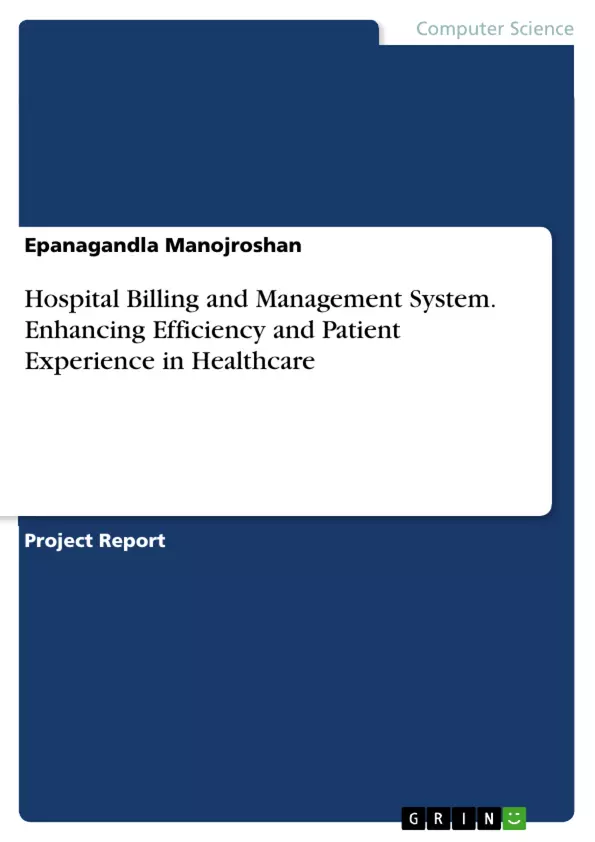This project explores the development of a Hospital Management and Billing System designed to streamline operations, improve patient experience, and optimize revenue management in healthcare organizations. The system integrates key functionalities such as patient registration, appointment scheduling, billing, and claims management, leveraging automation and digitization to eliminate manual processes and reduce errors. By centralizing patient records and billing information, healthcare providers gain easy access to critical data, enhancing workflow efficiency and reducing administrative workloads. Additionally, patient-centered features like online appointment booking, electronic health records, and personalized portals empower patients to manage their healthcare experience, improving engagement and satisfaction. The implementation of this comprehensive software solution aims to transform hospital operations, improve financial performance, and promote seamless coordination across departments, ultimately fostering a positive, patient-centric environment.
Inhaltsverzeichnis (Table of Contents)
- Introduction
- Literature Review
- Problem Statement
- System Design
- Methodology
- Data Collection
- Data Pre-processing
- Model Architecture
- Algorithms and Techniques
- User Interface Design
- Testing and Validation
- Iterative Development
- Results
- Future Enhancement
Zielsetzung und Themenschwerpunkte (Objectives and Key Themes)
The objective of this project is to develop a comprehensive Hospital Management and Billing System to address inefficiencies and lack of integration in current systems. This system aims to streamline operations, reduce errors, and optimize resource utilization through automation and digitization.
- Improving efficiency in hospital operations.
- Enhancing the patient experience through streamlined processes.
- Automating processes to reduce manual work and errors.
- Centralizing patient information and billing processes.
- Developing a user-friendly interface for ease of use.
Zusammenfassung der Kapitel (Chapter Summaries)
Introduction: Introduces the Hospital Management and Billing System, highlighting its purpose and benefits in improving hospital operations and patient care.
Literature Review: Reviews existing research on hospital management and billing systems, focusing on the use of technology to streamline operations and improve patient care. It identifies a gap in comprehensive solutions that integrate all aspects of hospital management.
Problem Statement: Defines the core problem of inefficiency and lack of integration in existing hospital systems, emphasizing the need for a centralized, integrated solution to improve efficiency and the patient experience.
System Design: Presents the system's architecture and design, including a data flow diagram illustrating the flow of information within the system.
Methodology: Details the seven-step methodology employed in the project, including data collection, pre-processing, model architecture, algorithm selection, UI design, testing, and iterative development.
Results: Shows screenshots of the user interface, including the login screen and the main menu.
Future Enhancement: Outlines potential future improvements, such as integration with external systems, advanced analytics, telehealth capabilities, mobile app development, and the incorporation of AI and machine learning.
Schlüsselwörter (Keywords)
Hospital Management System, Billing System, Python, tkinter, sqlite, Automation, Digitization, Patient Information Management, Appointment Scheduling, User Interface, Efficiency, Patient Experience.
- Quote paper
- Epanagandla Manojroshan (Author), 2024, Hospital Billing and Management System. Enhancing Efficiency and Patient Experience in Healthcare, Munich, GRIN Verlag, https://www.grin.com/document/1516397



